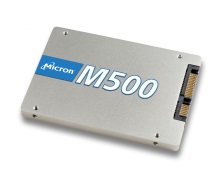It’s that time of year again. The time of year where I thank vendors for sucking slightly less than their competitors over the previous 12 months. Some do this through product excellence, some through excellence in customer service. As a rule, I find vendors trying, and so I take an almost absurd amount of pleasure in reminiscing on those that, in one form or another, make the grade. To this end, I will start the year’s festivities with a joke about how to define how “ready” a product is for general consumption. Google ready: 4 years, 3 PhDs and an army of undergrads later it runs in 30 datacenters on 5 continents, but only two people know how. Hyperscale ready: with a trained $1M/yr specialist and a support team of 5 it will support 50,000 clients at 99.95% uptime. Enterprise ready: with a team of 20 certified technicians, 4 middle managers and a vendor engineer it will integrate with our mainframe. SMB ready: one of the two burnt out husks that were people remembers enough about how it works to restart it. Trevor Pott ready: issues reduced to one 4:00am phone call per annum. So without further delay, here is my totally biased list of 2016’s kickass vendors that have made my own personal life easier: Scale Computing Scale Computing make hyperconverged appliances. Servers (3 or more) with built-in storage that work together to allow virtualized workloads to achieve high availability without needing a SAN. Scale’s solution is built on top of KVM and uses their own custom software for monitoring, self-healing, management and a user interface. Scale doesn’t expose nearly as many of the hypervisor’s features to the user as rivals like VMware. From one perspective, this means that Scale is nowhere near...
Micron demos all-flash VSAN
posted by Phoummala Schmitt
For their VMworld demo, Micron is taking VSAN to a whole new level by creating an all flash VSAN. The thought process behind this is to demonstrate “best in class” performance of a VSAN configuration. Eliminating the storage bottlenecks on the data store by using 100% solid state storage and the latest high speed network interconnects, Micron is aiming for performance that can push the limits of storage. Micron’s all flash VSAN configuration includes a 6 node cluster of Dell R610, Dual 2.7Ghz 12 core Xeon v2 CPU, 10 x 960GB Micron M500 SSD for the data storage, 2 x 1.4TB HHHL Micron P420m PCIe SSDs for the VSAN cache, and 768GB RAM, configured into 2 disk groups. Each disk group consists of 1x P420 and 5 x M500 drives. The M500 SSD drives are rated up to 80,000/80,000 random read/write IOPS each. The PCIe P420m is rated at read 750,000 IOPS with write IOPS at 95,000. With these kind of statistics, expect to see some great throughput. The end result is 9.4TB of storage space and 1.9TB of read cache, which results into a 1:5 cache to data ratio. (The unrepresented cache space is used for the write buffer which is 840GB for each host.) The VMworld demo has Active Directory and VMs running various applications – including high-IOPS-consuming Microsoft SQL server and backups using Veeam. The VDI deployment on the VSAN showcases what kind of performance can be achieved when storage bottlenecks are removed. The all flash VSAN is not a fully supported configuration at the moment; however, when VMware does support it Micron will be ready. If you are at VMworld San Fransisco, stop by the Micron booth to see the demo and what kind of high performance VSAN you can...


